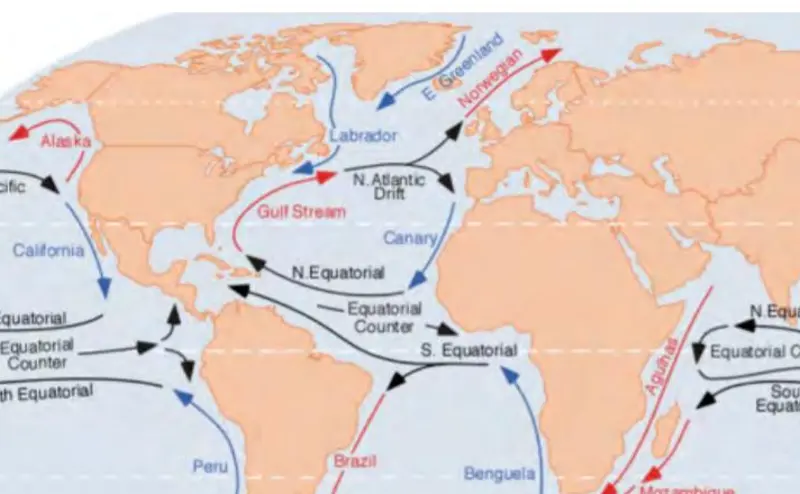The Atlantic Ocean's Cooling Trend: A Climate Mystery
Over the course of a year, the Atlantic Ocean witnessed a steady rise in surface temperatures, reaching new records. However, this trend has suddenly and exceptionally reversed in the past few months, leaving the scientific community puzzled.
In June, the Atlantic Ocean saw temperatures significantly above average, ranging from 2 to 5 degrees Fahrenheit (1 to 3 degrees Celsius), and peaking at 9 degrees F (5 degrees C) in certain areas. The Atlantic has consistently experienced record-breaking temperatures since March 2023. For the fourth year running, the world's oceans set new records for high temperatures.
But recent years have witnessed a sharp cooling trend in the Atlantic Ocean at the end of the summer, a vast expanse of water that has a crucial influence on global climate patterns. The Atlantic Multidecadal Oscillation (AMO) has generated concerns among both scientists and policymakers.
The normal Atlantic Ocean Cooling/Heating Pattern
The Atlantic Multidecadal Oscillation (AMO) is a natural climate pattern that leads to long-term fluctuations in the average sea surface temperature of the North Atlantic. It is common for the Atlantic Ocean to go through alternating periods of warming and cooling. When the climate is warming, the sea surface temperature goes up, whereas during a cooling period, it goes down. For centuries, this repeating pattern has been seen, impacting weather and ocean currents worldwide.
The usual values are:
- Tropical Atlantic: Temperatures typically range from 25°C to 30°C in the summer and 20°C to 25°C in the winter.
- Temperate Atlantic: Temperatures can vary significantly depending on latitude and season. Summer temperatures might range from 15°C to 25°C, while winter temperatures can drop to 0°C or below in some regions.
- Subpolar Atlantic: Temperatures are generally colder, with summer averages ranging from 5°C to 15°C. Winter temperatures can be well below freezing, especially in the northern latitudes.
Ocean currentsare the main driving force behind the AMO. The North Atlantic receives warm surface waters from the tropics through this complex current system, which then cool and sink. By returning to the depths, the cooled water creates a conveyor belt that regulates the global climate.
Fluctuations in the strength of the currents can disturb the system that transports heat in the Atlantic, resulting in changes in sea surface temperatures. The intensity of the currents can be affected by various factors, including freshwater input from melting glaciers and alterations in atmospheric circulation. These factors play a role in the cooling and warming phases of the AMO.
The Atlantic Ocean currents involved in temperature transfer are:
- Gulf Stream: A warm current that carries tropical waters northward along the eastern coast of North America, influencing temperatures in those regions.
- Canary Current: A cold current that flows southward along the western coast of Africa, cooling the coastal areas.
- North Atlantic Drift: A northward extension of the Gulf Stream that carries warm waters toward Europe, contributing to milder climates there

What is Unusual in 2024?
While the AMO is a natural phenomenon, the current cooling trend has raised concerns due to its intensity and potential implications for global climate.
In 2024, the Atlantic Ocean has experienced a more pronounced cooling phase than in previous decades. This unusual cooling has been linked to changes in atmospheric circulation patterns and increased freshwater input from melting Arctic sea ice.
Scientists still grapple with the complexities of the Atlantic Multidecadal Oscillation (AMO) and its underlying causes. The interconnectedness of Earth's climate systems, coupled with the limited availability of historical data, makes it challenging to isolate specific factors driving this cooling trend.
The AMO cooling trend was examined in a study published in the journal Nature Communications in 2023, which employed a combination of climate models and historical data to investigate its potential causes. The study found that a combination of natural variability and human-induced climate change likely contributed to the observed cooling. However, further research is needed to quantify the relative contributions of these factors.
What Are the Most Probable Causes of This
Several theories have been proposed to explain the current cooling trend in the Atlantic Ocean. One leading hypothesis suggests that increased freshwater input from melting Greenland ice sheets is disrupting the AMOC, leading to a weakening of the Atlantic's heat transport system.
Dr. Michael Mann, a renowned climate scientist at Penn State University, has been vocal about the potential impact of freshwater input on the AMO. In a 2024 interview, he stated, "The influx of freshwater from melting Greenland ice is likely playing a significant role in the current cooling trend. This could lead to a further weakening of the AMOC, with potentially far-reaching consequences for global climate."

Another hypothesis suggests that the cooling is influenced by alterations in atmospheric circulation patterns, like the North Atlantic Oscillation (NAO). The NAO influences wind patterns and ocean currents, and its negative phase, characterized by stronger westerly winds, can enhance cooling in the North Atlantic.
While these theories offer potential explanations, the specific factors causing the current cooling trend are still under ongoing scientific investigation. As scientists continue to gather data and refine their models, a clearer understanding of this complex phenomenon may emerge.